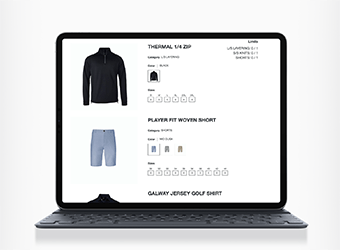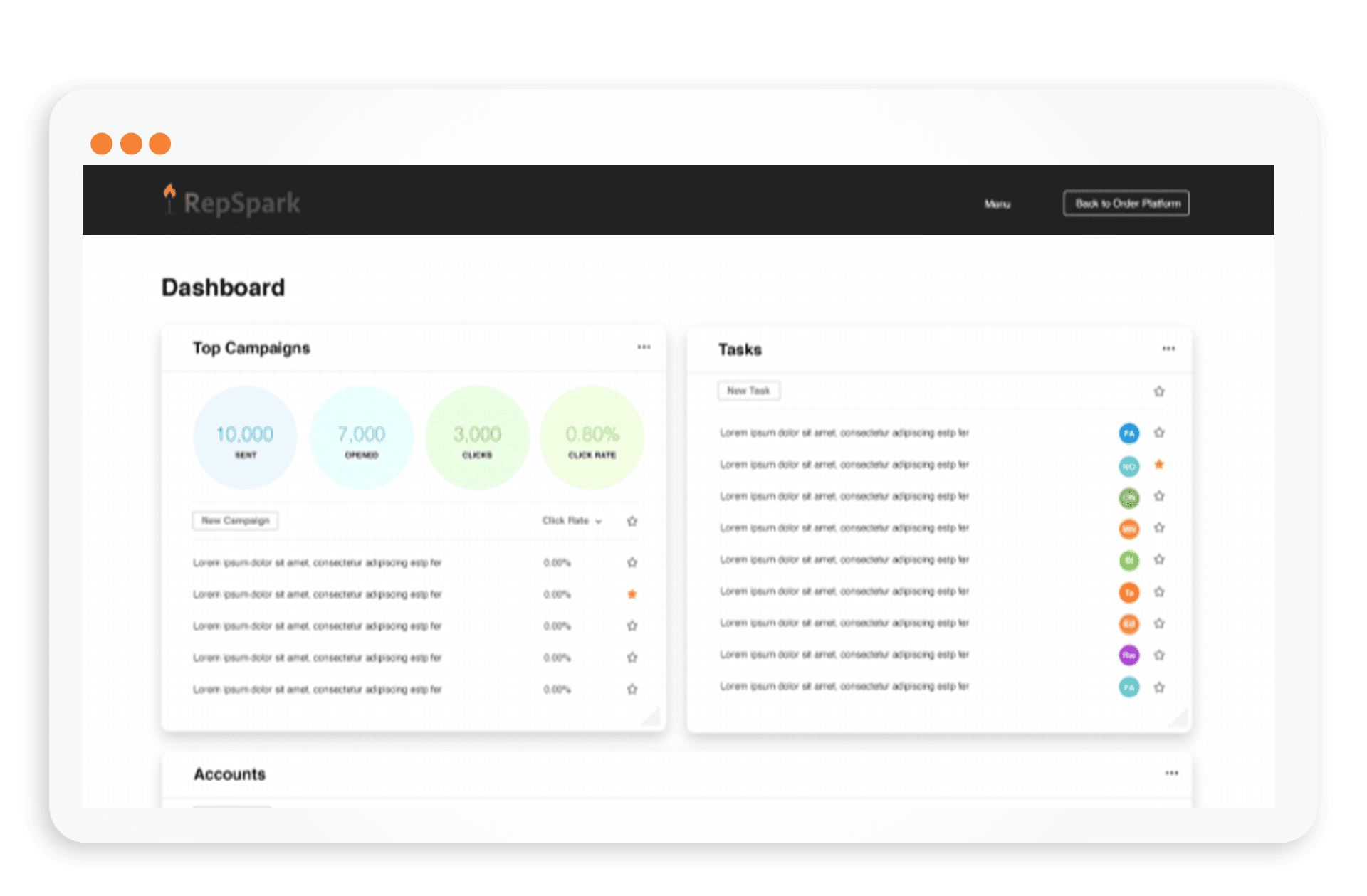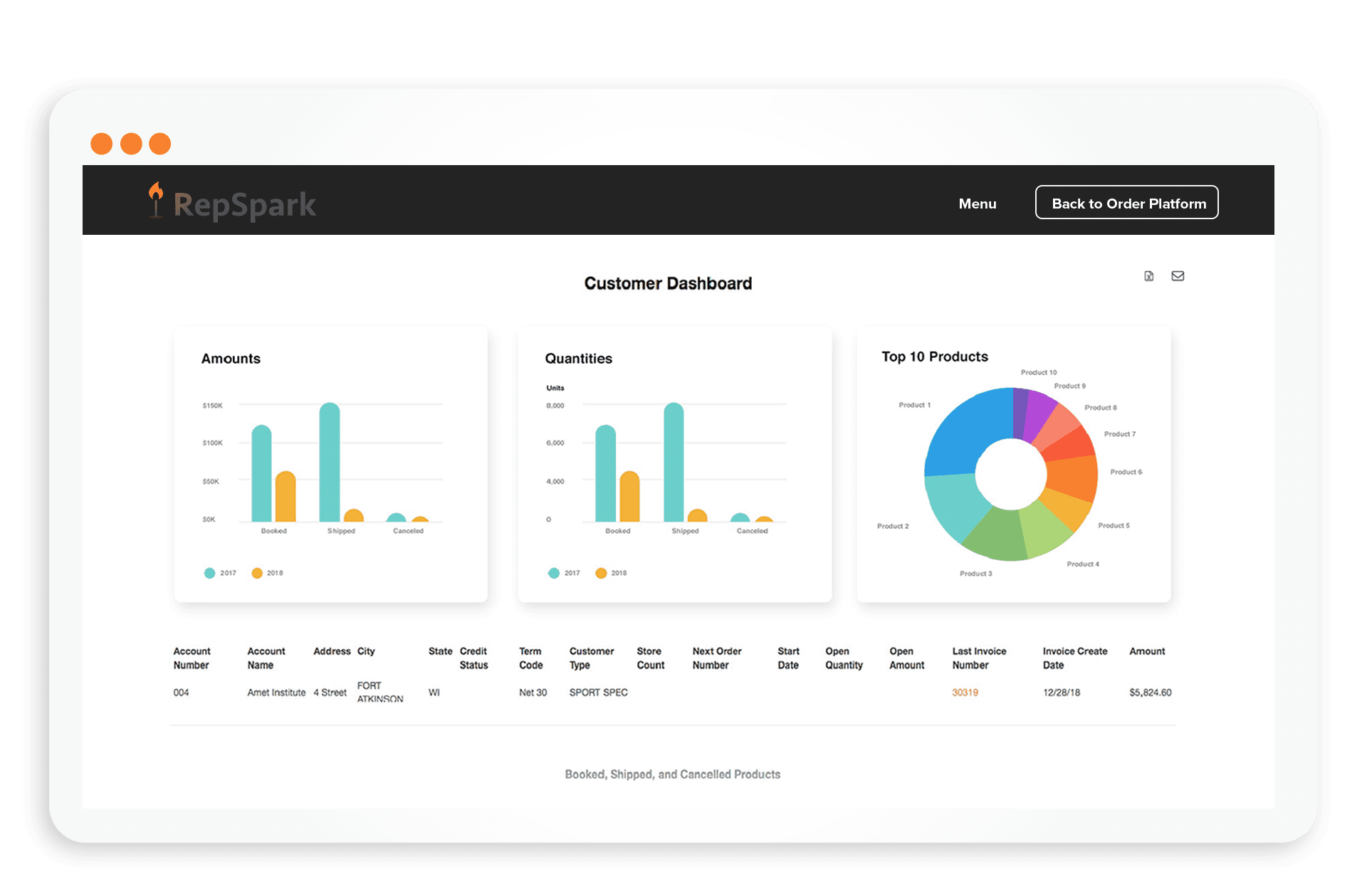Share this
The Evolution of Buying: Omnichannel, Recommerce & Customer Experience
by RepSpark Team on October 4, 2022
The shopping trend is constantly evolving. There was a time when a physical shop was the only option. But that has changed with the invention of the internet. Back then, reselling and buying secondhand was a thing of blemish, but nowadays, that's not the case anymore. So many factors have worked in unison to reshape people's shopping habits, with the pandemic and sustainability being the most recent driving forces.
Recommerce or reverse commerce has been the hottest trend in recent times. People are more into saving and making money, rather than showing off their newly bought clothes and gear. Omnichannel retailing was a thing, more or less, but the pandemic has given it a boost like never before. Together, these have set the standard of customer satisfaction to a new height.
Coping with such situations isn't as easy as it sounds. You will have to invest, which will require money. Plus, you cannot rely on statistical information entirely. Keep reading to figure out the new trends of recommerce and what it could mean for your brand.
The Changing Trends in Shopping
 Shopping or trading is the constant and oldest form of interaction among people. Despite it being constant, the trends in shopping are ever so evolving. You won't see the same trend next year that was in vogue last year. Customers' expectations change, and retailers cope with that by making changes.
Shopping or trading is the constant and oldest form of interaction among people. Despite it being constant, the trends in shopping are ever so evolving. You won't see the same trend next year that was in vogue last year. Customers' expectations change, and retailers cope with that by making changes.
Similarly, retailers innovate new things to attract more attention from customers. Thus, shopping trends change. The only thing that is constant in shopping trends is change. Due to the pandemic, the change has occurred even faster. People were stranded in their homes, so going to brick-and-mortar stores was not possible.
This has completely reshaped online shopping and e-commerce. Online shopping was a thing way before the COVID pandemic hit. But during the pandemic, online shopping was the only option. So physical stores couldn't keep up with the pace of the rapid rise of online shops. Those who already had online stores could accustom more efficiently by adopting omnichannel retailing.
Recommerce is another trend that also rose during the pandemic but is more common among the young generation. Recommerce is the act of selling previously owned products and buying secondhand products. It has multiple impacts, like reducing pollution, saving money, etc.
The secondhand market is growing fast and won't go down any time soon. Recommerce has revamped so many already existing trends as well.
Omnichannel Retailing: The Renewed Trend
To understand the impacts of omnichannel retailing, you must understand single-channel and multichannel retailing.
Single-channel Retailing
Traditional retail is designed to be a one-stop shop. The single distribution system is designed to focus on a single sales channel. The retailers do not have any online stores. This model was initially very successful because using a single channel could reduce all costs while increasing sales. Furthermore, a single-channel strategy may assist a provider in maintaining control over a particular market.
However, digital technologies have limited the possibilities of single-channel stores. Customers wanted a more convenient experience by utilizing multiple channels. Customers' expectations are rising, and a single-channel strategy will no longer suffice to win them over.
Multi-channel Retailing
As a result, retailers switched to a multichannel strategy. We are not at omnichannel yet. This multichannel business strategy has quickly become the retail industry standard and has continued to evolve.
Retailers who implement this strategy could provide customers with the option of purchasing their products through offline and online channels. As a result, buying goods is much more convenient, significantly boosting sales.
Another worth mentioning upside to this strategy is that it provides customers with 24/7 access. This helps to build up trust and loyalty between seller and buyer. Retailers can experience the benefits of multichannel retailing by thoroughly analyzing customer behaviors for a good customer experience, which is essential for this age of the internet.
 But, as multichannel retailing expanded, many questions arose, like how to provide customers with a smooth experience between channels. You might be wondering what we mean by various channels. Once, there were only bulky desktop computers to access the internet. But nowadays, smartphones are the primary medium of using the internet. All of these are various channels for shopping. So, omnichannel was invented to solve that problem.
But, as multichannel retailing expanded, many questions arose, like how to provide customers with a smooth experience between channels. You might be wondering what we mean by various channels. Once, there were only bulky desktop computers to access the internet. But nowadays, smartphones are the primary medium of using the internet. All of these are various channels for shopping. So, omnichannel was invented to solve that problem.
Omnichannel Retailing
This new method ensured that customers could continue from where they left off. Retailers started making websites for all platforms like computers, mobile phones, etc. The main difference between multichannel and omnichannel is the focal point.
In an omnichannel system, the focus is on the customer and providing multiple channels to reach your customer (brick-and-mortar, eCommerce, etc). Multichannel is more product-focused, and various channels are available to reach customers; however, they aren't integrated like an omnichannel system.
Why is Omnichannel Thriving?
Omnichannel is thriving for quite a few reasons. Omnichannel sales ensure availability around the clock. You have to close physical stores by a certain time, but there are no such restrictions for online shops. Online e-commerce sites remain open 24/7. Thus, sales increase automatically. Customers begin to trust the retailer more.
Also, omnichannel guarantees seamless transition between channels. Suppose you stopped by a store and saw something that caught your eye. A few days later, you could be contemplating that same purchase, so you begin looking at the product on your desktop. Then when you finally decide to make the purchase, you add to cart, but a call comes in, and you get distracted. Fortunately, while waiting at the doctor's office, you can complete the checkout from your smartphone. You can also set the delivery location to your friend's house instead of your own for convenient pickup. All of these have been possible due to omnichannel retailing.
How to Successfully Switch to Omnichannel Sales?
There are some key factors to be aware of to switch to multichannel retailing successfully. Here's a brief insight into the aspects:
1. Customer-centric Business Model
 Pioneers put customers and their needs first to create smooth and compelling multichannel customer journeys. To better understand consumer decision journeys, established B2B organizations are more likely to do substantial primary research than start-ups.
Pioneers put customers and their needs first to create smooth and compelling multichannel customer journeys. To better understand consumer decision journeys, established B2B organizations are more likely to do substantial primary research than start-ups.
Due to such research, these companies can clearly understand customer preferences at each touchpoint and step of the decision-making process. They create multichannel consumer profiles, manage relationships, and operate a digital customer experience platform to rethink the customer experience.
A similar pilot program demonstrated high satisfaction, reduced churn, and increased digital sales.
2. Full-scale Approach
In the last year, one-third of B2B organizations re-defined their sales channel roles. Popular fashion and apparel companies like Neiman Marcus, Oasis Fashion established a holistic B2B omnichannel approach geared to its business model and customer base. To create a completely holistic approach, three supporting functions were added to the client journey:
● Using market scanning and business data, a lead generator job was created to generate leads across all channels.
● The company's website, social media profiles, and e-commerce gateway were all modernized to serve clients better throughout their digital shopping process.
● A separate customer service team assisted customers with orders and deliveries.
3. Channel Conflict Management
Due to confusion and increased competition, conflict among channels is common in omnichannel retailing.
You can pinpoint the exact source of the conflict by closely monitoring it. Deal proactively rather than avoid it to bring your venture the highest success.

4. Digitalization
The core foundation of omnichannel is digital platforms. Strong digitalization is crucial for successful omnichannel retailing. The right investment to manage your digital tools can bring massive success in omnichannel selling.
5. Cross-functional Collaboration
Collaboration between different channels is the key to a successful transition to omnichannel from multichannel. You must find the right talent and gather people from various backgrounds to work together.
Weekly meetings, monthly get-togethers, and illustrations of new processes to generate interest in the organization are the keys to establishing strong cross-functional collaboration.
Recommerce: The New Favorite of this Generation
Recommerce or reverse commerce has never been more popular. It has given rise to new practices like thrift, upcycling, etc. Reselling goods is nothing new, but this practice has recently hit a new high that deserves more attention.
Whether a consumer or seller, you can make a fortune out of recommerce. Clothing takes the largest share of recommerce. Home appliances, collectibles, arts, etc. come next. Clothing taking the first place in recommerce is great news from an environmental perspective.
The garment industry is responsible for 10% of carbon emissions and is the second-largest water consumer. The impact on the environment is huge and you cannot ignore it.
We often buy cheap clothes that we know will last for a month or two. While this seems economically viable from a consumer's standpoint, its impact on the climate is catastrophic. While recommerce can't completely eliminate it, it can mitigate the effects.
Recommerce also facilitates recycling and reusing items instead of making new ones. Clothes have become more affordable and more people can wear the same clothes. Also, recommerce reduces waste. People take more care of their clothes for better resale value, and this cycle goes on.
Following are some statistics to show the growth of the recommerce industry:
- The secondhand market is expected to double in the next 5 years, reaching $77 billion.
- More than half of the resellers in 2020 were first-time sellers, accounting for 36.2 million.
- There are more than 9 billion clothing items that can be reused.
- 33 million customers have bought secondhand clothes for the first time in 2020.
- In 2020, more than 220 million customers say that they don't mind buying secondhand clothes. This number was significantly less 5 years ago.
What Do These Changes Mean to Retailers?
These changes in shopping are drastic. To stay in the game, brands and retailers must be aware of all of the new trends and figure out how you can make the most out of them. Recommerce is a trend that's growing faster and is no sign of slowing down. You have to analyze this trend carefully, how people around you react to it, and make a decision.
You cannot always rely on statistics. Yes, more and more people are into buying secondhand clothes but that doesn't necessarily mean people around you are into it too. Your shop may be in an area where only the super-rich reside or where the price is very affordable.
People in your area may not be interested in buying pre-owned garments. So don't jump to any conclusion just by looking at the numbers. Analyze your surroundings and try to anticipate how people react to these trends.
The same goes for omnichannel. If your shop is in a remote area where people are not engaged with technology that much, opening an app or e-commerce site for your shop won't do any good. The bottom line is you have to be diligent when dealing with these trends to gain success.
How can you Meet the New Customer Expectations?
Going with the flow is not easy. Customer expectations are higher than ever currently. Their shopping behavior has also changed. However, you can follow the following instructions to meet the customers' expectations by leveraging the newest trends:
Cash-in on Digitalization
COVID-19 has suddenly increased customer traffic to digital channels. Consider that online sales climbed 25% in two weeks in March 2020 after growing at a CAGR of only 14% for the previous four years. The pandemic's dramatic impact on consumer shopping habits has heightened merchants' eagerness to extend their digital presence.
Increase internet visibility and engagement. Shelter-in-place orders have prompted industries to innovate. From January to April 2020, app downloads climbed 11% year-on-year. Many established stores noted record downloads, while others rushed to catch up swiftly. Several companies have intensified their activities in reaction to the epidemic.
The point is that things are going digital faster than ever. Make a new app for your business, make a more functional e-commerce site, invest in the latest POS software, use a portable POS machine for easy customer handling and faster checkout, etc. The more you go digital, the more you can cope with these new trends.

Innovate and Renovate Omnichannel
Omnichannel is here and going on firmly, but that doesn't mean you cannot change it. Nothing is perfect, and there is always room for improvement. However, remember that any new addition should be compatible with customer needs.
An idea might seem unique to you, but it won't bring any good if it doesn't serve the customers. You can arrange a virtual 360-degree tour of your shop. It will give the customers an in-store feel while shopping from home. This type of virtual tour has gained immense popularity during the pandemic, especially in the garments sector.
You can also try new delivery mechanisms. You can use third-party delivery services for faster and more efficient delivery. Many grocery shops have extended their shops. They put demanding products in front of the stores so that delivery companies or customers can pick the products fast.
Create a Functional Business Model
The pandemic has shown us how unpredictable things can be. It also demonstrated how widespread and long-lasting an effect such disasters can have. You have to continuously reassess and remodel your business to stay on top of the game.
You can do that by analyzing every possible situation and solution. Customer feedback is very important. You can also monitor social media to get a view of current trends and make changes accordingly.
Conclusion
People's shopping habits are always changing. But it is nothing to be concerned about. All you need to do is keep your eyes peeled and be ready for it.
There are lots of ways to leverage such trends to your advantage. The recommerce industry is already so big that everyone has a place in it. If you consider omnichannel retailing and recommerce, you can take your business to new heights and stay ahead of the curve in the modern business world.
References
https://www.outsidebusinessjournal.com/brands/trend-report-the-rise-of-used-gear-sales/
https://www.intelistyle.com/omnichannel-retail-best-examples-fashion/
https://www.magestore.com/omnichannel-retail-guide/what-is-omnichannel-retail/
https://econsultancy.com/what-is-recommerce-why-growing-popularity/
https://getshogun.com/learn/what-is-recommerce
https://hbr.org/2022/01/how-b2b-businesses-can-get-omnichannel-sales-right
https://www.thredup.com/resale/#resale-industry
Share this
- April 2025 (9)
- March 2025 (12)
- February 2025 (11)
- January 2025 (11)
- December 2024 (11)
- November 2024 (13)
- October 2024 (12)
- September 2024 (6)
- August 2024 (9)
- July 2024 (7)
- June 2024 (8)
- May 2024 (7)
- April 2024 (1)
- March 2024 (3)
- February 2024 (1)
- January 2024 (6)
- December 2023 (1)
- November 2023 (2)
- October 2023 (2)
- September 2023 (2)
- August 2023 (10)
- July 2023 (3)
- June 2023 (4)
- May 2023 (4)
- April 2023 (7)
- March 2023 (4)
- February 2023 (2)
- November 2022 (1)
- October 2022 (2)
- September 2022 (1)
- August 2022 (2)
- July 2022 (2)
- May 2022 (1)
- January 2022 (2)
- November 2021 (1)
- October 2021 (5)
- September 2021 (1)
- July 2021 (2)
- June 2021 (1)
- March 2021 (4)
- February 2021 (3)
- January 2021 (2)
- December 2020 (4)
- November 2020 (1)
- October 2020 (1)
- September 2020 (1)
- August 2020 (2)
- July 2020 (2)
- May 2020 (1)
- April 2020 (3)
- March 2020 (1)
- February 2020 (1)
- January 2020 (2)
- December 2019 (3)
- November 2019 (1)
- October 2019 (5)
- September 2019 (2)
- August 2019 (2)
- July 2019 (5)
- June 2019 (1)
- September 2018 (2)
- February 2018 (2)
- January 2018 (2)
- November 2017 (2)
- October 2017 (2)
- August 2017 (1)
- June 2017 (3)
- May 2017 (3)
- April 2017 (1)
- March 2017 (1)
- February 2017 (1)
- January 2017 (2)
- October 2016 (1)
- September 2016 (1)
- August 2016 (4)
- June 2016 (2)
- May 2016 (1)
- April 2016 (3)
- March 2016 (2)
- February 2016 (3)
- June 2015 (1)
- November 2014 (1)
- August 2014 (2)
- July 2014 (1)
- May 2014 (1)
- January 2014 (1)
- December 2013 (1)
- June 2013 (1)
- May 2013 (1)


